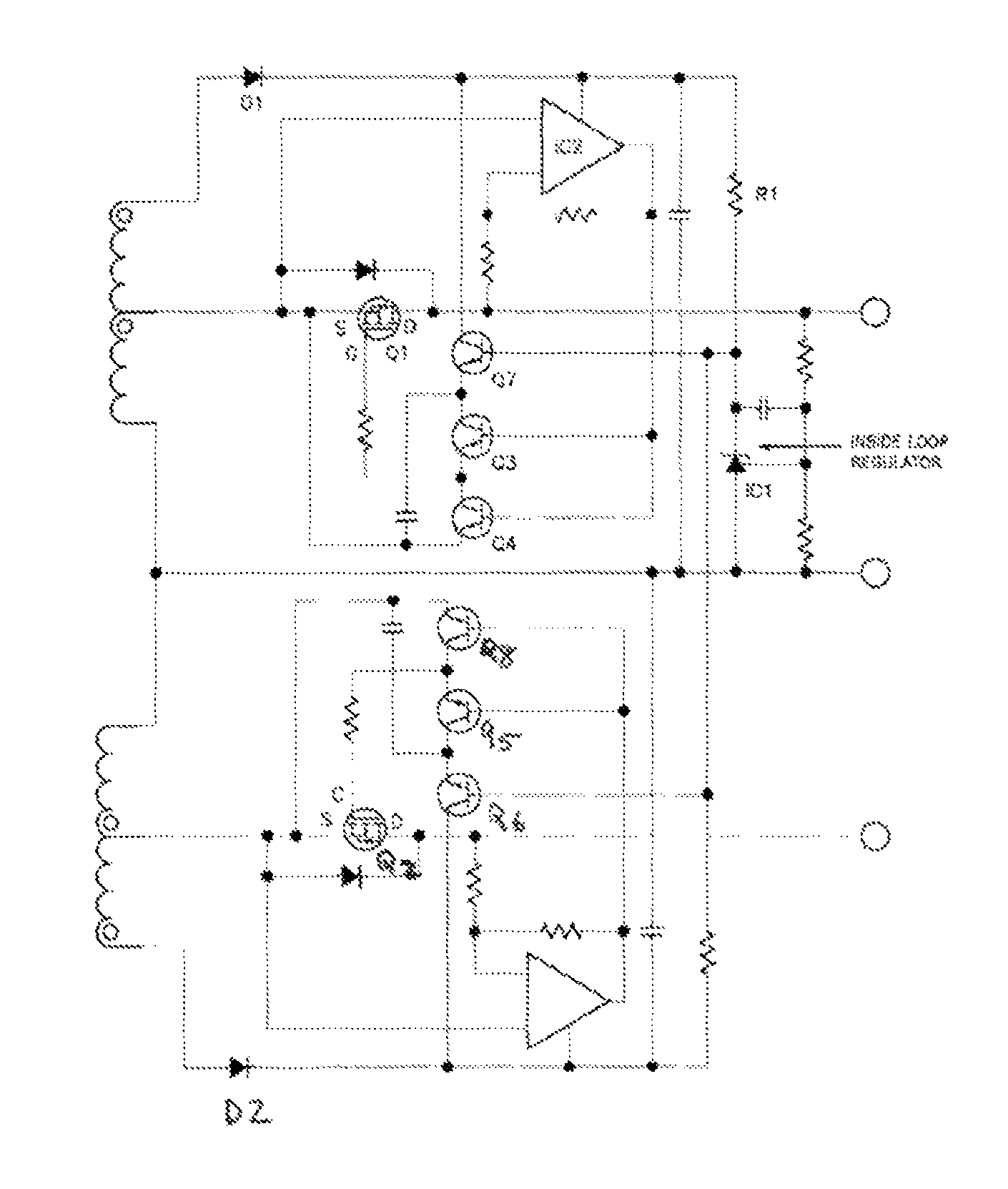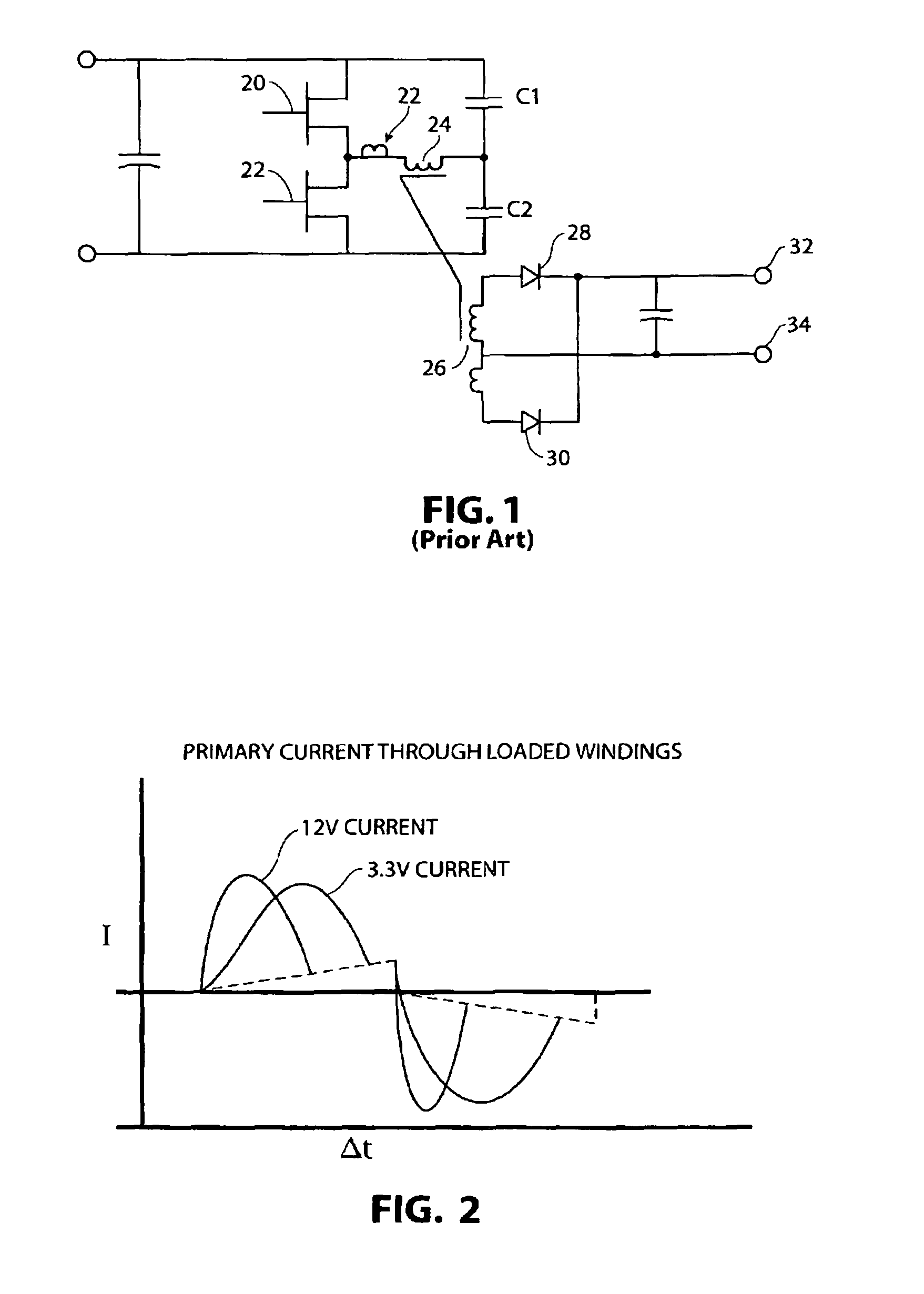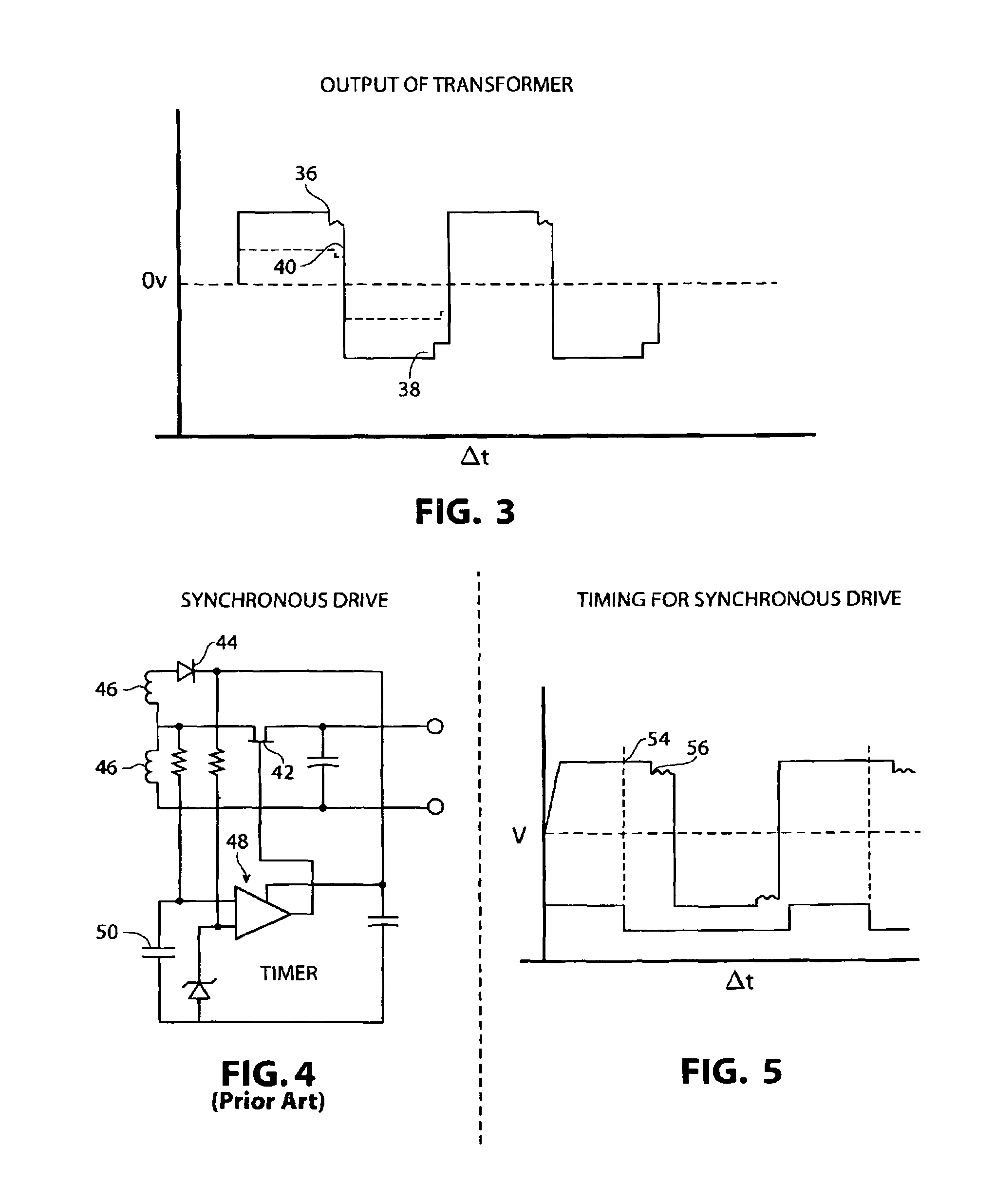Multiple voltage DC to DC resonant converter
a resonant converter and multi-voltage technology, applied in the direction of electric variable regulation, process and machine control, instruments, etc., can solve the problems of significant changes in reflected leakage inductance, and achieve the effect of reducing resistance of this resistor, improving efficiency of the entire circuit, and reducing current in the field effect transistor
- Summary
- Abstract
- Description
- Claims
- Application Information
AI Technical Summary
Benefits of technology
Problems solved by technology
Method used
Image
Examples
Embodiment Construction
[0041]As previously described, the new invention utilizes a new and novel technique to allow a resonant circuit to remain in a synchronized state, regardless of the fact that there is only one transformer, and regardless of the fact that the reflected leakage inductance is varying by an order of over two to one. This is accomplished by utilizing a new technique called trailing edge modulation.
[0042]In this new trailing edge modulation technique, each of the outputs, e.g., the 3.3 Volts, the 5 Volts, or the 12 Volts has a circuit that terminates the operation of the synchronous field effect transistors (Fet's), when the current in the synchronous field effect transistor begins to turn negative, regardless of the load. This means that the cross-load can be any combination, heavy 3.3 and light 12 Volt, or heavy 12 Volt and light 3.3 Volt. Still, the primary current remains a composite sine wave made up of each independent frequency reflected from the secondary, thus remaining in regula...
PUM
 Login to View More
Login to View More Abstract
Description
Claims
Application Information
 Login to View More
Login to View More - R&D
- Intellectual Property
- Life Sciences
- Materials
- Tech Scout
- Unparalleled Data Quality
- Higher Quality Content
- 60% Fewer Hallucinations
Browse by: Latest US Patents, China's latest patents, Technical Efficacy Thesaurus, Application Domain, Technology Topic, Popular Technical Reports.
© 2025 PatSnap. All rights reserved.Legal|Privacy policy|Modern Slavery Act Transparency Statement|Sitemap|About US| Contact US: help@patsnap.com



